
“It’s not land the Black Corsair spies from the crow’s nest of the Tigress, but a young woman, as beautiful as the light of dawn, standing in the middle of the ocean atop a giant lily pad. But is she a damsel in distress, or a siren with plans to lure Conan, Belit and their entire crew to a watery grave?”
(EDITOR’S NOTE: Welcome to The Classic Conan Countdown, a series of reviews focusing on the original 275 issues of Marvel Comics’ Conan the Barbarian, which were published from 1970 to 1993. This is a review of Conan the Barbarian (Vol. 1) #98.)
By WALLY MONK – Paint Monk’s Library Editor
While Robert E. Howard is best known for his literary creations like Conan the Barbarian, King Kull of Atlantis and Solomon Kane, the Cross Plains, Texas native was also a prolific poet. Hundreds of different rimes are attributed directly to him, and many of them were published posthumously.
The poem on which this issue is based, “Sea Woman”, was written by Howard but didn’t appear in print until 1970 in the anthology Singers in the Shadows by Donald M. Grant Publishing in 1970. It would be printed again in Glenn Lord’s 1976 novel The Last Celt.
It’s a haunting lyric, and it’s one of my favorites, second only to Edgar Allan Poe’s “Annabel Lee”.
The appeal of this simple yet well-written issue lies both in Roy Thomas’ prose and in the art team of Buscema/Chan/Roussos. The siren trope is an old one, yet the art and panel layouts make this story come alive in vivid reality – it’s almost as if you are caught in the siren’s web yourself.
This is one of my favorite issues of Marvel’s original Conan series, and a welcome and very different one-off story allowing fans to catch their breath before the ending of Thomas’ adaptation of “Queen the Black Coast” in two issues.
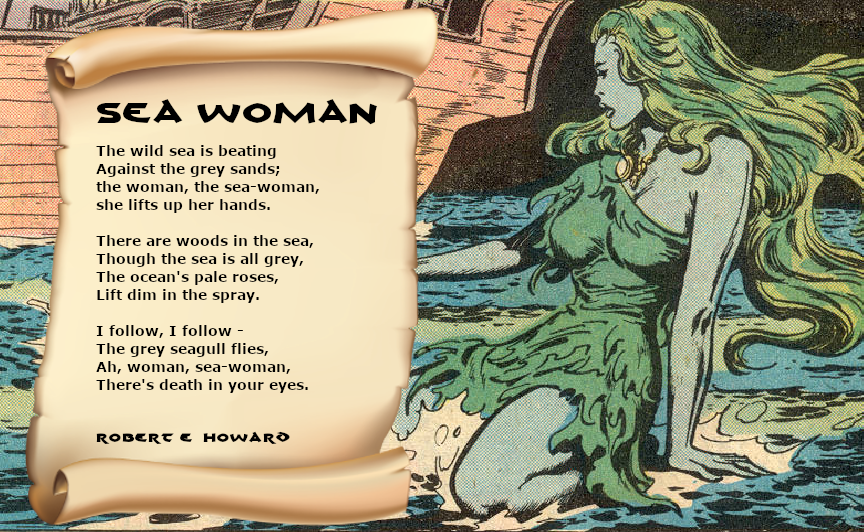
Review: Conan the Barbarian #98
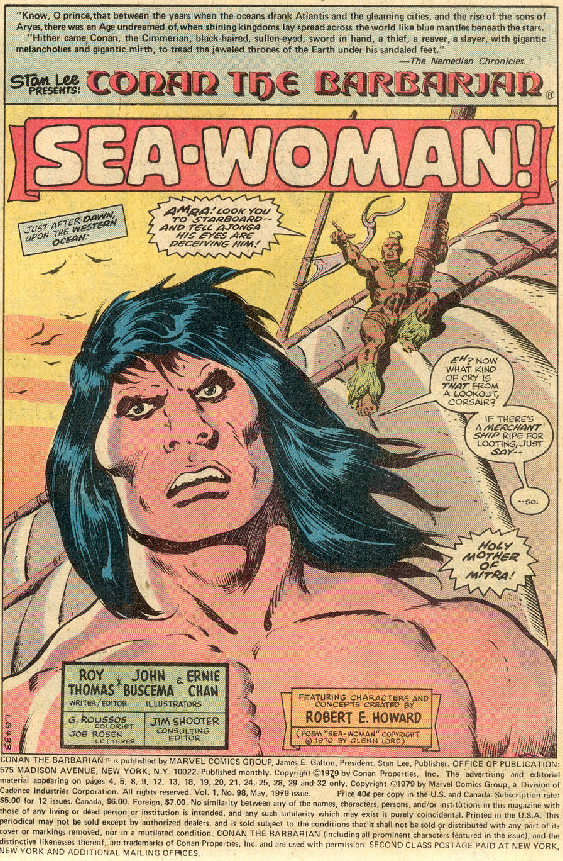
One of Belit’s corsairs raises the alarm from the crow’s nest. Conan, expecting a ship to loot, is surprised at the cause for alert. Scribe Roy Thomas describes the scene in the water with a description unlike any you’ll find in modern comics. It’s not a vessel to be looted on the horizon, it’s a person in the water off the prow of the ship.
“A woman, azure of flesh, and with free-flowing hair the color of some radiant type of seaweed…a woman, young and fair of face and form, who must by all rights have been lost off some tempest-tossed and pirate-sunk ship…yet who stands silent and nearly un-moving as a statue atop what seems a huge, bobbing lily pad…a thing which seems like a poor lifeboat indeed!”
– Roy Thomas, Conan the Barbarian #98
As the crew of the Tigress stares in awe and shock at the woman, Conan prepares to offer an apology to the man in the crow’s nest, acknowledging that he understands how ones eyes might “play tricks on them” at sea. The barbarian suggests leaving the woman in the water, thinking her to be a witch – but N’Yaga believes that she should be brought aboard and that he senses no evil in her.
A crew of corsairs is dispatched to bring the sea-woman aboard the Tigress. She is mute, although she often opens her mouth as if to speak.
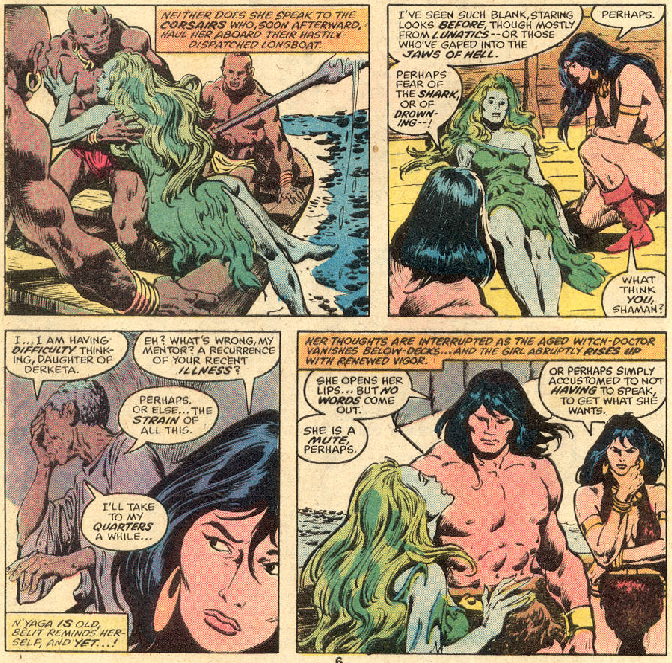
One of the corsairs tries to give their new passenger a piece of jewelry, as he is awe-struck by her beauty; she shrugs it off, immediately offering it to Conan instead. Belit is not amused.
The voyage of the Tigress continues, and the raid of a Stygian vessel the next morning doesn’t allow the crew time to think about their new crew mate until Conan wanders alone – or seemingly alone – above deck as night falls. The sea-woman approaches Conan seductively, but mustering all of his strength, he brushes the beauty off, making his way to his true love Belit to clear his head.
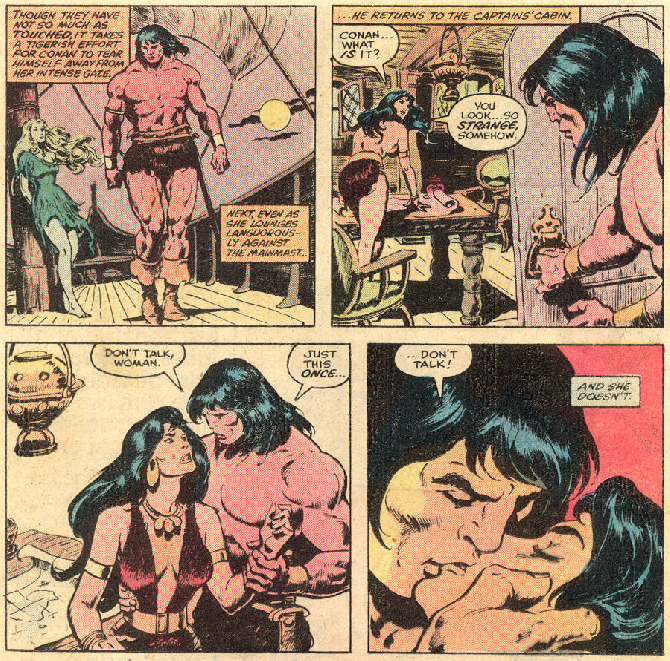
As the Cimmerian walks away, the mysterious woman turns her attention to a lone corsair named B’Tumi who has come above deck. B’tumi approaches the pale blue-skinned lass and she once more opens her mouth yet no words can he heard.
The next morning M’Gora announces that their crewmate B’Tumi is missing, and as the crew searches for him, the sea-woman continues staring contentedly out to sea.
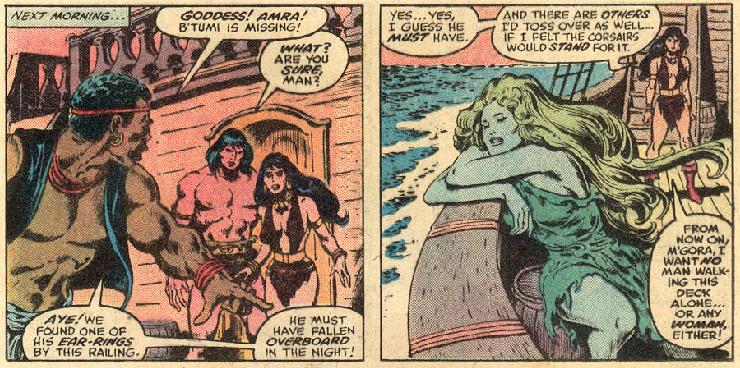
The sea-siren tries the same thing with a different corsair named Asambi the following night, only this time, Conan is on hand to observe the seduction.
To the barbarian’s horror, the blue-skinned woman begins her silent song and dives into the sea. Asambi follows, only to be caught in the siren’s kiss, drifting lifeless to the bottom of the sea.
Now, the sea-woman turns her attention to Conan and he can hear the words of her silent song – the lyrics to Howard’s poem! Taking his knife with him, Conan jumps into the sea, following the siren’s call.
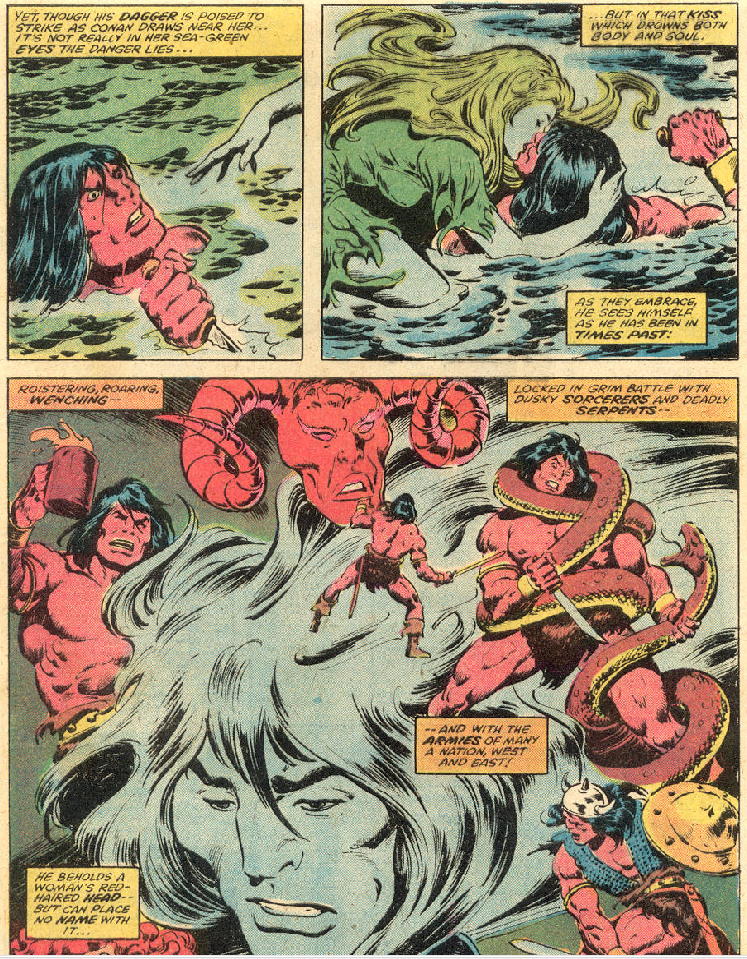
Will our Cimmerian succumb to the siren’s melody, and who is the mysterious woman who lures men to their death with a song that only her intended victim can hear?
CAPSULE REVIEW: Wow. Just…wow. The entire creative team hits a home run with this issue. That’s an odd thing to say, as one-off stories are normally frustrating and an unwelcome distraction from a good ongoing story line.
The Buscema/Chan team certainly knows how to draw beautiful women. In panels where Belit and the sea-woman are side by side, it’s clear that the newcomer is much more attractive than the she-pirate, and she’s drawn beautifully herself.
George Roussos is a master colorist. I have mentioned in previous reviews how he nicely creates variations in skin color for the different tribes along the Black Coast, and there is no deviation here. The blue shades of the sea-woman are subtle and haunting, creating an ethereal look that adds a mysterious element to the writing and the other illustrations in the book.
Interestingly, an equal amount of the comic’s strength comes from what can be read between the lines and the panels. Conan has made it clear in many different issues that Belit is his true love – yet he is tempted also by the sea-woman. His resistance and ultimate decision to dive in the ocean after her lends a certain credence to the strength and power of her seductive spell.
This is an issue of Conan – and one of the rare one-off stories – that should be in any Conan comic book collection. While not heavily promoted by collectors or particularly sought after, it’s a tribute to the quality of comic book writing and art from days long past. Do not miss it.
On a scale of 1-10, I’d give this issue a solid 9.5.
On eBay, copies were available for less than $5.
As always, I am – Wally (AKA Paint Monk)


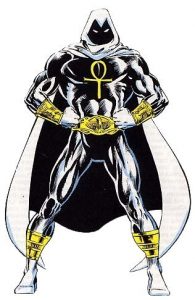




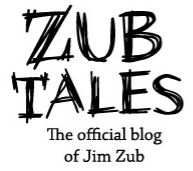

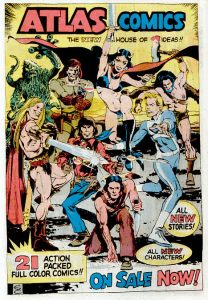

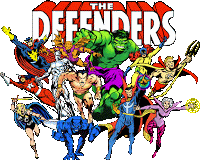


 July 19th, 2019
July 19th, 2019 

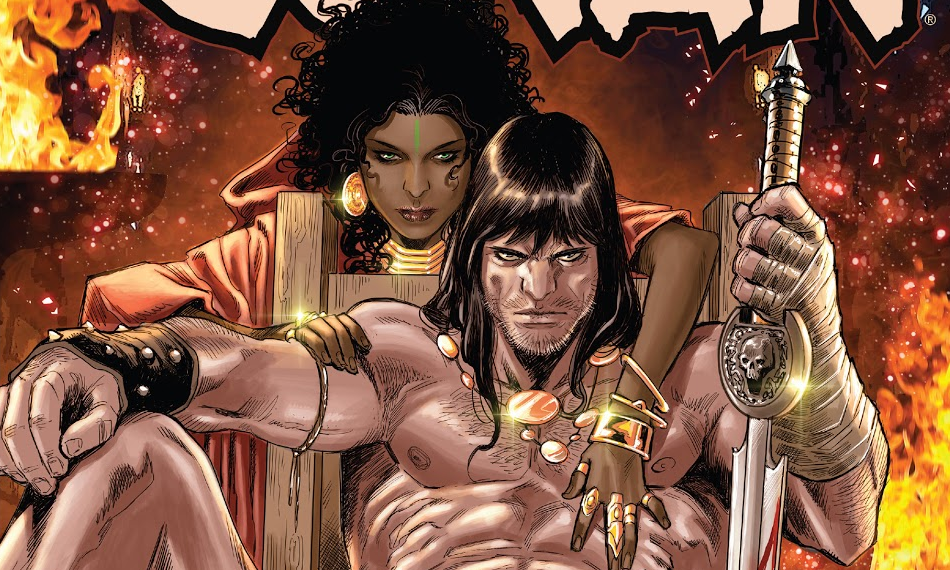
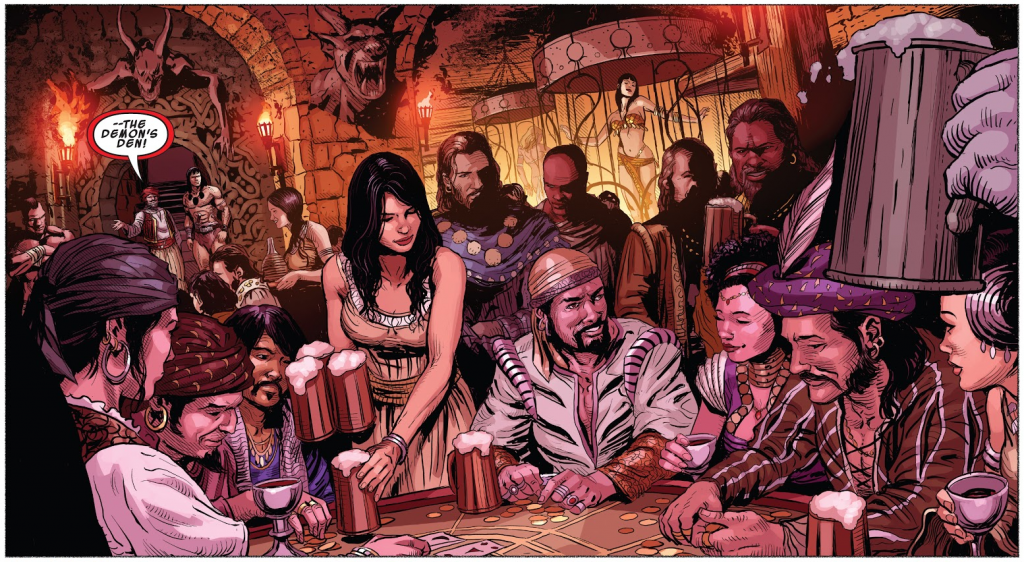






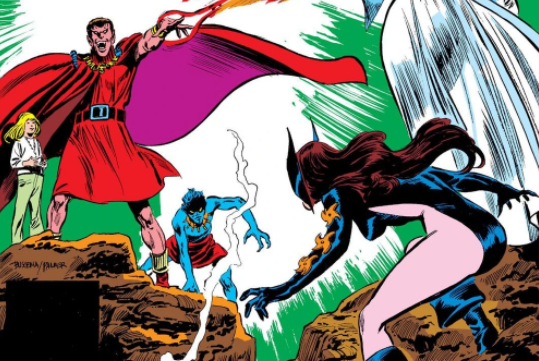


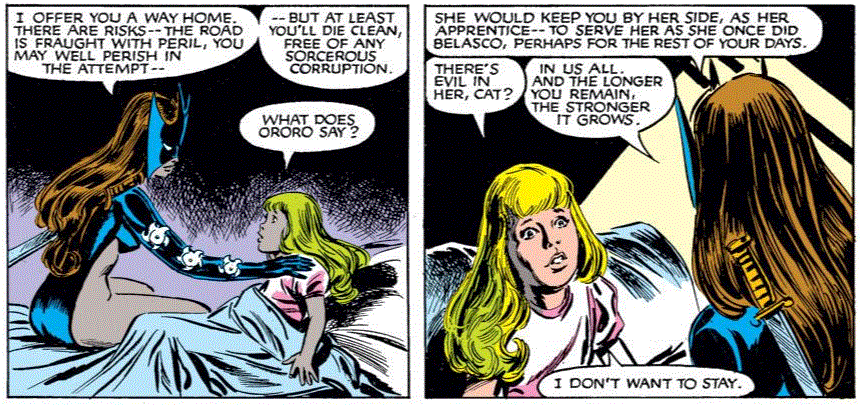


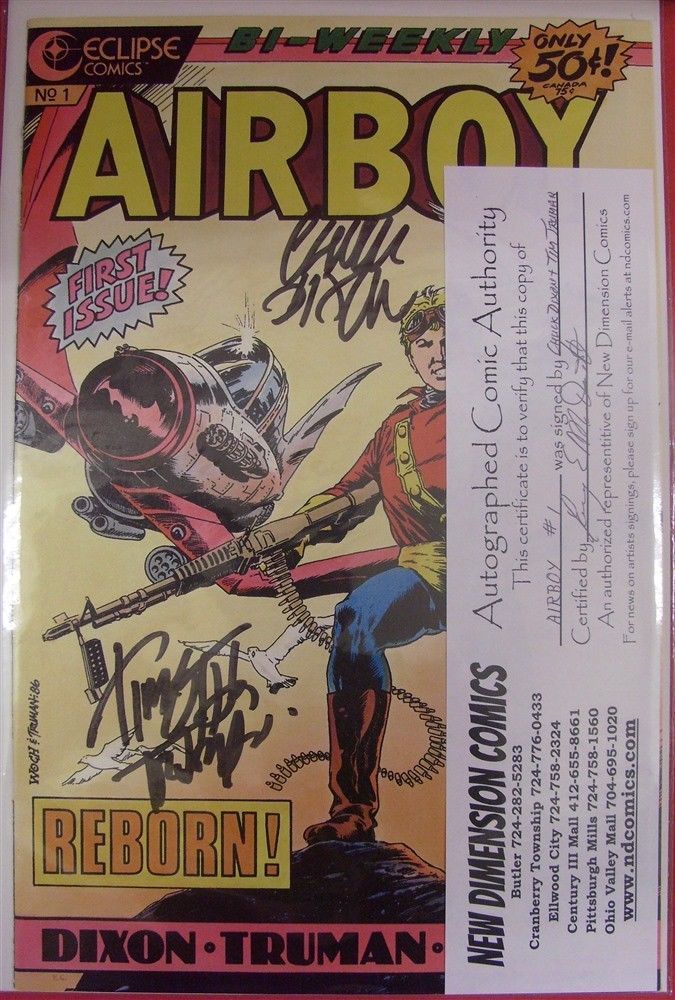
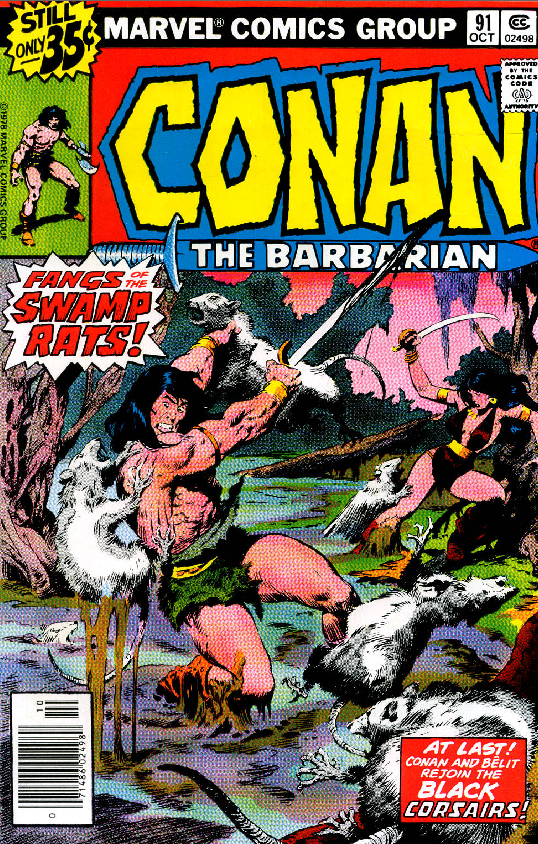
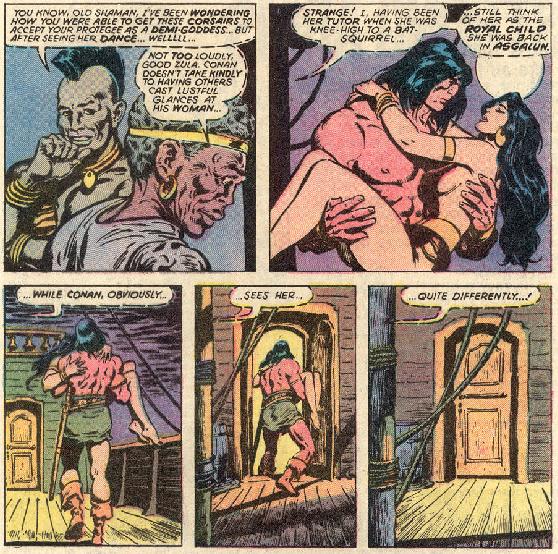
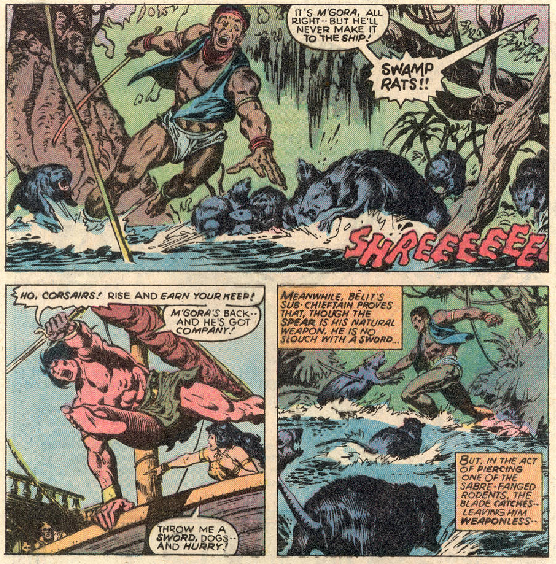
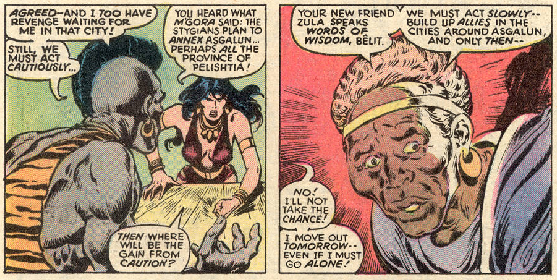
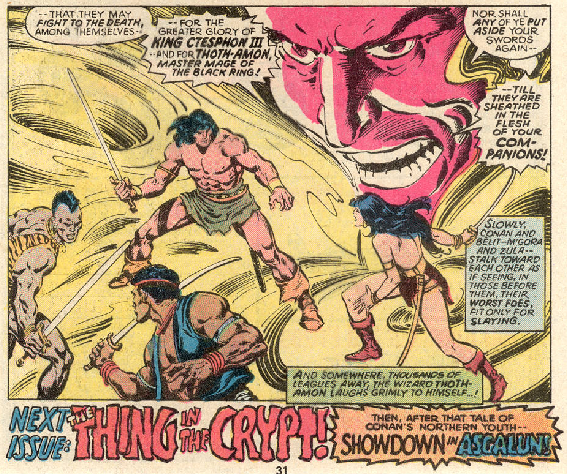
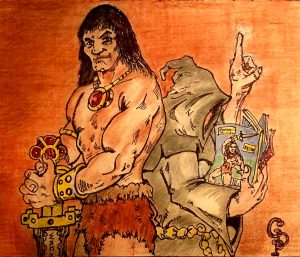


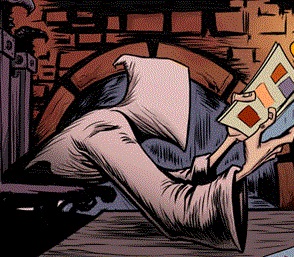

COMMENTARY: Comic Books as Academic Literature?
By WALLY MONK – Paint Monk’s Library Editor
“Johnny, put down those stupid X-Men like I told you! You haven’t finished reading To Kill A Mockingbird, and I said no comics until your book report is done!” mom shouts, the frustration in her voice clear as a bell.
Sadly, the creative 12-year-old sets aside the latest tale of Scott Summers and Jean Grey and goes back to his homework. While the young man may remember names like Atticus Finch, Scout and Boo Radley, he’s more likely to remember that Jean Grey became the Dark Phoenix and almost destroyed the universe until she was defeated and seemingly killed by her dearest friends.
There is no question that a basic knowledge and acquaintance with classic literature is important for today’s youth; to say otherwise would be ignorant and short-sighted. But comic books (and their counterpart, the graphic novel) have opened doors for students and continue to do so, despite vehement opposition from more traditional professors and researchers.
With growing evidence that comics are an literary medium of their own, the glossy-covered newsprint stories have still been much maligned by parents and educators for decades. Even Congress held the comic industry’s feet to the fire in the 1950s, leading publishers to establish a self-censoring body called “The Comics Code Authority”.
One British journalist expressed his frustration in 2012, when graphic novels were finally admitted to London’s best-selling novels list.
Before a reasonable discussion of comic books as a teaching tool can begin, one must first examine the definitions of “literature” and “teacher”. Literature, according to Merriam-Webster’s dictionary, is defined as “writings in prose or verse having excellence of form or expression and expressing ideas of permanent or universal literature.” A teacher, the dictionary concludes, is “one who instructs.”
Excellence of form? Ideas or permanence or universal literature? Comics and graphic novels meet both those criteria, and some experts in both psychology and the comic medium are going to great length to prove this as fact. And appreciation of the comic book medium is certainly something that can be taught.
Comic Books As Literary Form
The late Will Eisner, one of America’s foremost cartoonists and writers, began his work in the 1940s and is an icon of the comic industry. In the 1970s, he began to experiment with longer comic stories compiled into book or magazine format which he dubbed “graphic novels.” He was one of the first famous illustrators to begin examining comic books as more than folded up “funny books” in the back pocket of an imaginative youngster.
His well-known book, Comics and Sequential Art, breaks down the art of storytelling with a combination of words and pictures and predicts the industry’s future. Not only was Eisner a modern-day comic scholar, the largest industry awards in sequential art are named after him in honor of his legendary contributions to the genre.
It was Eisner’s belief that comic books were a genre of literature unto themselves; a stand-alone, if you will, and didn’t need to be compared with other forms of writing. Even the layout of panels, or boxes which show pictures and dialogue, he believed, could direct a reader to a deeper understanding. If a renown talent like Eisner could make an argument for comics to stand on their own in the literary field, perhaps there is something here worth investigating.
Psychologists and neuroscientists have long determined that different people favor different learning methods, and comics engage more human senses than written words on a page alone can titillate.
In the pages of the 2018 Scandinavian Journal of Comic Art, Dr. Ian Hogue, a lecturer and professor at London’s University of the Arts, argues that comic books in this manner can intensify the reading experience and make it more memorable. He notes that a comic book can be held numerous ways and can be folded, and feels different than a novel (touch), the artwork speaks in combination with dialogue (sight), smell (of newsprinted pages), and elements of reading standard literature are combined. Together, this makes for a unique experience, one far different than reading a paperback or hardcover textbook.
This makes comic books more than just a group of images. On the comic page, the reader sees physical objects that impact them in ways that exceed the mere written word. And the human mind’s comprehension of the writing, in combination with the suggestions from each image, contribute to the perception and emotion involved in each story.
These factors all work to bring people deeper into the fictional – or not-fictional – world the authors and illustrators hope to create.
It’s common knowledge that professionals, from academics to mental health practictioners, agree that there are many ways to engage the intellect through sequential art; now, what about universal truths that make literature a classic? Do comic books engage those truths and concepts as well?
They most certainly do, beginning as early as Jerry Siegel and Joe Shuster’s Superman in 1938 and perhaps even earlier.
Comics Tell A Universal Truth
During World War II, a rise of patriotic comic books came into being. Kids could share the thrill as Captain America, complete with his patriotic costume and shield, charged into battle against the evil Nazi supergenius The Red Skull. Other characters called America’s youngsters to unite in common purpose.
In the 1950s and 1960s, Classics Illustrated comics took their turn with the famous literature, with stories like Nathaniel Hawthorne’s Scarlet Letter and Melville’s Moby Dick illustrated in full, blazing color attempting to make things more eye-catching to readers. In this way, comics have always appealed to their readers human nature. Superman always looked for a way to diffuse a situation, protecting “truth, justice and the American way”.
In contemporary media, comics continue to tell societal tales of justice and address social and political issues. New characters, such as Marvel’s Bobby Drake (X-Men) and Jean-Paul Baubier (Alpha Flight’s Northstar) have come out as homosexual. Old characters have been re-envisioned for new audiences, including a Muslim version of Ms. Marvel (formerly a caucasian woman named Carol Danvers) and a huge emphasis on African hero T’Challa, the Black Panther. All of these characters represent voices that have traditionally been silenced but now can be heard through the medium of the comic book and comic book film.
Much like traditional written works, comic books give readers heroes of different colors, beliefs, societal contexts, political motivations and sexual attractions. The authors and artists work to deliver these comics in a manner that pushes to stretch the scope of what may be seen as good in the world and in various situations.
How is this different from To Kill A Mockingbird addressing racism? Or different from John Steinbeck’s Grapes of Wrath, detailing the survival of one family through the tumultuous Great Depression? It’s not. It’s the same concept, with a different yet slightly familiar delivery mechanism that incorporates as many of the human senses as possible.
Conclusion: Comics Are Their Own Genre
Unlike a paperback book, comics and graphic novels engage more of the human senses than ordinary reading. While this is not to reduce the importance of classic literature, it does serve as the beginning of a valid argument that comic books should not be so easily dismissed, especially by teachers of individuals who struggle with or don’t seem to engage with classic classroom teaching methods.
Professionals in the industry like Will Eisner have made compelling arguments for why comic books stand on their own, while some psychologists and literary scholars have agreed that there is more than one way to engage the brain when it comes to reading.
Through the use of images, laid out in a particular way, readers can engage both left and right brain centers of learning through the use of this art form. Yet for some reason, traditional educators seem reluctant to embrace this relatively new and innovative art form that so clearly is a viable – and fun – learning tool.
With the current challenges associated with learning and especially reading, the comics medium is something that all educators should look at in more depth and begin to take seriously – even if they’ve never been a fan of comics themselves.
As always, I am – Wally (AKA Paint Monk)